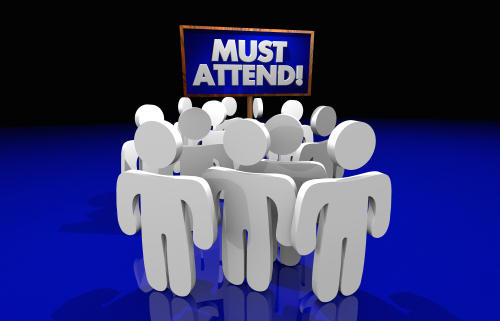
Delivering exceptional events starts with data. However, many organizations still don’t have a handle on successful data collection and implementation strategies.
Event planners sometimes use data in a vacuum – especially when faced with the abundance of information available today. And while leveraging data to guide event planning strategy can be helpful, it needs to be the right data.
It makes little sense to rely on external second or third-party data when the information you need already lives inside your company’s CRM. This data and transactional history provide deeper insights companies use to measure all customer touchpoints and develop a holistic picture of the customer journey.
With almost 64% of consumer-facing brands saying their events have reached 76% of an attendance level compared to 2019, event teams should use first-party data generated from past events to maximize customer engagement.
These three steps will help you harness your CRM’s customer data, level up your future planning strategies, and turn events into your organization’s superpower.
1. Develop a Data-Driven Strategy
Before diving into the planning process, identify your event goals. How many attendees do you hope to attract? What percentage of return attendees do you anticipate will participate? Determine if these numbers align with your event’s purpose. For instance, let’s say you’re hosting an event focused on showcasing an updated version of your product. Since not all your customers have the newer version, you’ll need to adjust your attendance expectations, as this topic only applies to a segment of your customer base.
If you’re still in the early planning stages, ask your customers what kind of sessions they’d find most valuable. Show your customers their opinion matters. Invite them to contribute ideas. By asking for their input, they see you listening to their needs, which can boost attendance numbers and the overall event’s impact. It’s easier to target potential attendees and build loyalty when you understand the topics that interest your customers.
Identify and record the data, segment audiences based on event goals and customer insight, record the information in your CRM, and leverage it before, during and after the event.
Focus on outreach. Build a customer journey map to determine the most effective marketing channels. Consider scenarios where a customer might stray from the ideal journey and find a strategy to re-engage them. Segment your outreach by customizing each message to increase its relevance.
Automation tools also save time, freeing event planners from individually entering data or tracking individual engagement. By adding marketing automation to your CRM platform, you:
- Improve the customer journey.
- Streamline re-engagement strategies.
- Facilitate better communication flows.
2. Identify and Quantify Customer Touchpoints
Leading up to an event, maintaining communication across all customer touchpoints is critical. From general awareness campaigns and registration processes to social media messaging and day-of communications — each touchpoint provides robust, measurable data that can shape future event strategies.
Ticket sales and check-ins – It isn’t uncommon for people to purchase a ticket and not show up. Suppose the number of tickets sold outnumbers day-of attendees. In that case, you may need to prioritize your brand’s attendee interaction between the date they buy a ticket and the actual date of the event.
Registrations – Tracking registration data helps to identify if someone is a repeat attendee, allowing you to say “welcome back” immediately upon check-in or even send an SMS special gift to show your appreciation. Actions such as this help increase customer satisfaction and loyalty. Additionally, by mapping registration questions back to your CRM data, you can tailor the attendee’s in-event experience by aligning sessions or delivering specific messaging based on their preferences.
Visits to the event or company websites – Track metrics such as page views, unique visitors, and conversion rates. A successful event should generate increased direct traffic numbers.
Mobile app downloads – Event apps provide data for measuring success, like the number of downloads and engagement levels. When planning future events, implement strategies to target and interact with specific app users.
Social media engagement – Before and after the event, ask that your attendees use an event-specific hashtag when posting on their preferred social platform. You can measure audience growth by tracking how often the hashtag is shared.
Pre-event communication is important – so is ongoing engagement after its conclusion. To encourage repeat attendance, you can use any of these strategies.
Follow-up emails and post-event surveys – Send attendees a “thanks for coming” email or an event recap email to help with information retention. Send post-event surveys to gauge satisfaction, measure experience, and solicit other feedback. Customers want to know you’ve considered their perspective and heard their feedback.
3. Use Data to Improve Customer Retention
Once you have automated processes, identified the information needed to build an effective event strategy, and measured data from all customer interactions, you can take one more step.
By understanding the “why” behind event challenges or successes, you can master the “what” that drives people back to your events. Prioritize post-event reflection with your team soon after the event’s conclusion. Analyze the qualitative and quantitative feedback you collected.
Taking the time to review lessons learned shows your customers that you’re taking their feedback seriously, striving for improvement, and building momentum to deliver even better future events.
Returning customers are the single highest income driver for most companies. By increasing customer retention by 5% percent, profitability increases an average of 75%. With the right tools, your planning team can create informative, engaging, insight-driven events that bolster customer relationships and create a community benefiting the company and its customer.
In this climate, collecting and analyzing data simply for a post-event report is not enough. It’s the key to turning an event into a must-attend experience. Remember, all the data you need lies within your existing CRM. It’s time to make it work harder.
Get our newsletter and digital focus reports

Stay current on learning and development trends, best practices, research, new products and technologies, case studies and much more.


